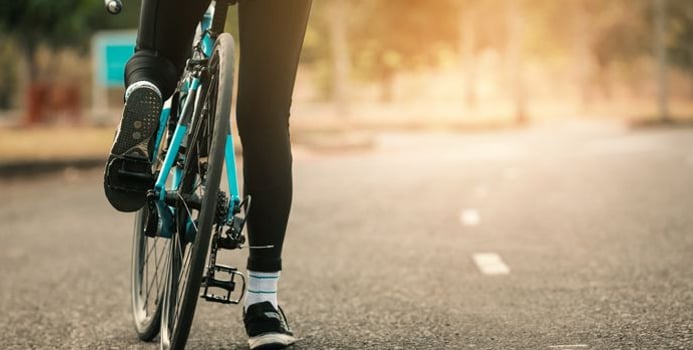You probably learned to ride a bike when you were about seven or eight years old. You'd hop on and race to your friend's house, ride to school or just ride up and down your street. Then you probably got your license and forgot your bike. Well, what was fun as a child is a great way for adults to improve their health and fitness. Cycling is a low-impact form of exercise that is appropriate for most people. But, to get the most out of your bike session, follow these tips.
Indoor vs. Outdoor
What once used to be a warm weather activity can now be done all year round. Gyms often have stationary bikes, or group cycling classes which mimic an outdoor ride. There is also equipment you can buy to turn your outdoor bike into an indoor trainer. Serious cyclists use these types of trainers in order to practice on their bike. Whether you decide to ride inside or out, let's focus on these things first.
Fit
Most people just focus on seat height so that they can reach the pedals, and that is important. You don't want to lock out your knee at the bottom of the pedal stroke, but keep a slight bend. For an indoor cycling class or outdoor bike, though, seat height is only one component. You may need to adjust the seat back further or move it forward to protect your knees. Also, handlebar height and position. If you're in the wrong position you may have a sore back, or not pedal as efficiently. So, get fitted! Your cycling instructor is trained to help you get in the right position. For outdoor training, call your local bike shop and find out if they can fit you properly on a bicycle. It's an important first step to any cycling workout.
Take Your Time
Your butt is going to hurt. It takes time to get used to a bike seat, or saddle, even if you buy a very comfortable seat or pad. So build up your time slowly. Plan on riding five to 10 minutes at a time to get your bottom used to the feeling, or lack of it. Yes, your butt can also go numb. You will get used to it, but take it slow.
Proper Clothing
Cyclists wear fitted clothing for a reason — so it doesn't chafe or get caught in the chain. Sometimes, you see people tuck a pant leg into their sock on one side. If your clothes get caught in the chain when you're outside, you are going down. Also, repetitive rubbing of loose clothing will cause irritation that can be uncomfortable to down right painful. Wear the proper clothes whether you are riding inside our out.
Footwear is another factor. If you're taking indoor classes occasionally, just wear your athletic shoes. However, if you are planning on some serious time in the saddle, or take classes regularly, invest in some cycling shoes. They are less flexible to offer you support, and help you pedal in a smooth manner. Some clip onto the pedals, others just slip into the foot cage. Serious cyclists and competitors prefer to clip in, but it can take practice outside. So practice if that's the route you choose.
Outdoor Safety
You know the rules of the road when it comes to your car — learn them for your bike as well! Know your hand signals, where to ride on the road, what the laws say regarding helmets, and anything else to help ensure your safety. Stay alert at all times, so no ear buds. You need to be aware of other vehicles and don't assume the drivers see you. If you are new to cycling outdoors, stay to side streets or marked paths until you get used to riding outdoors. Carry your phone with you, too. Safety first!
Hydrate
You drink that water during a workout in the gym. Well, the same goes on your bike. Indoor and outdoor bikes have a holder for your water bottle. Use it! On sessions an hour or less, water is usually just fine. But if you're riding longer, you probably need some electrolytes. Plan accordingly and make sure your bottle is filled.
[Image via Shutterstock]



